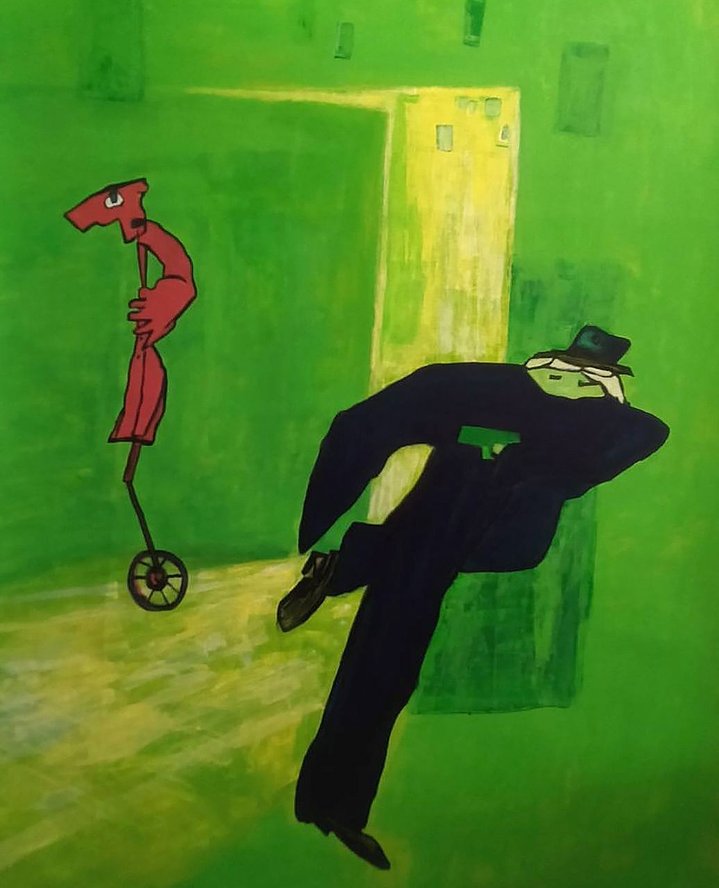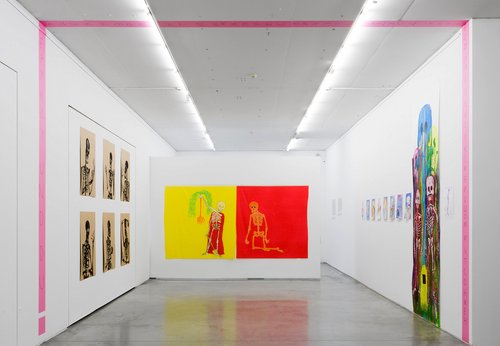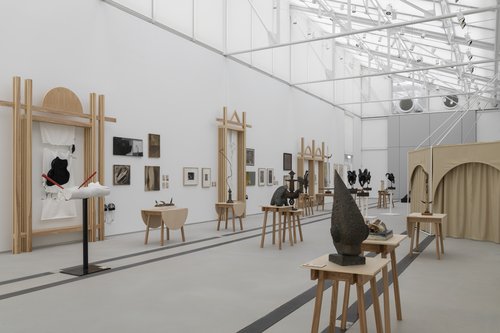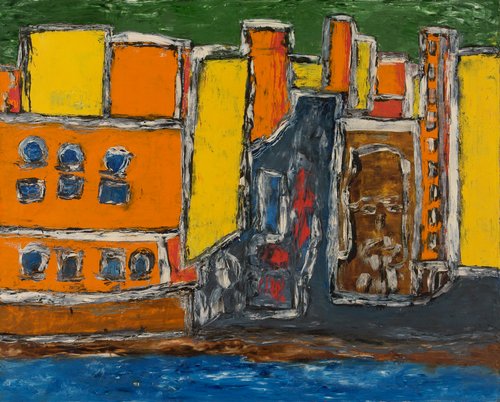Inal Savchenkov in Pursuit of the Invisible
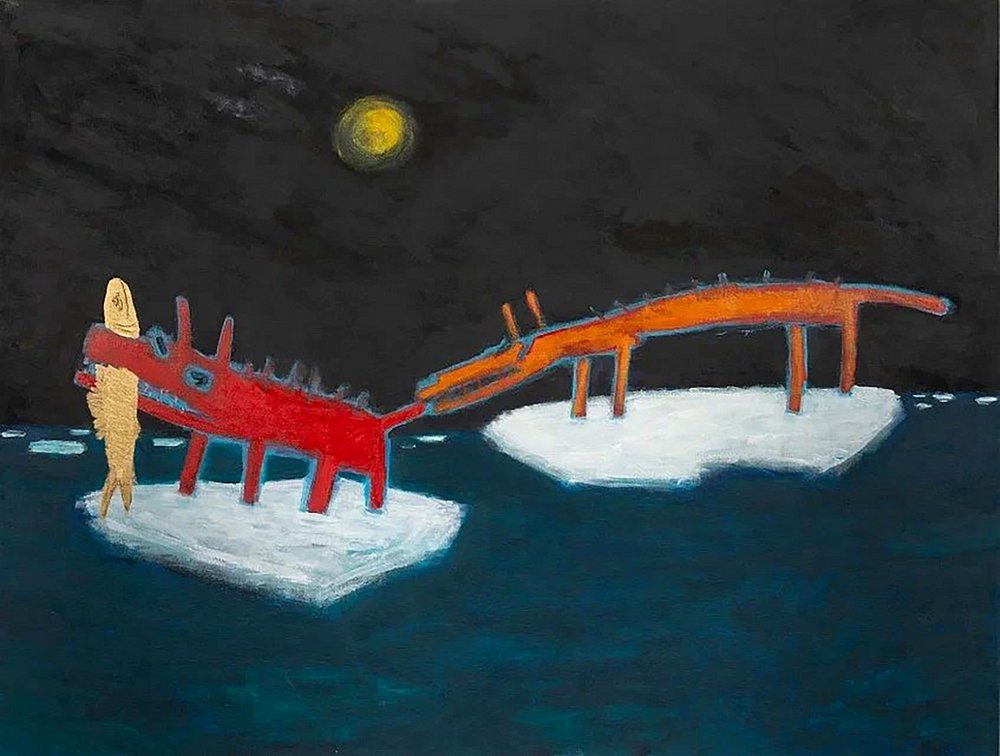
Inal Savchenkov. Hold your luck by the tail, 2019. Courtesy of Kuryokhin Centre for Contemporary Art
A retrospective exhibition of the work of Inal Savchenkov has opened at the Kuryokhin Centre for Contemporary Art in St Petersburg. From the 1980s New Artists movement to his latest creations, this show unveils a surreal blend of post-realism and musical influences.
Those looking for an upbeat show to combat the icy winds in St Petersburg should head over to ‘Traces of the Invisible Men’, a solo retrospective of the work of Inal Savchenkov (b. 1966) at the Sergei Kuryokhin Centre for Contemporary Art. On view are paintings which span nearly four decades, from 1986 to 2023, and animated films he co-created in the mid 1990s. The exhibition venue is well chosen. Kuryokhin (1954–1996) was a virtuoso jazz pianist, best known as the head of the Pop Mekhanika orchestra who organised impressive theatrical musical performances. One of the first videos of Kuryokhin's music in 1993 was a three-minute collage animation called ‘Amur’s Arrow’, shot on 35mm film as a trailer for a future feature-length film by the artists of the group ‘Engineers of Art’, inspired by and co-organized by Inal Savchenkov.
Inal Savchenkov arrived in Leningrad from Novorossiysk in 1982 and joined the ‘New Artists’ group led by Timur Novikov (1958–2002). At that time, he followed their ‘One Artist – One Painting’ concept, whereby each new painting had to be better than the previous one. Savchekov covered previously painted canvases with new layers of paint or used them in spontaneous performances. In the late 1980s, together with some friends and his younger brother Sergei Yenkov (b. 1972) all of whom followed him to the northern capital in search of their artistic calling, Savchenkov created several artistic groups with fairy-tale names like the ‘Good Wizards’ or ‘North Pole’. In 1989 he co-founded the ‘School of Art Engineers’ which became quickly known for its animation art.
Savchenkov’s art owes much to music and DJ subculture, in his energetic paintings he continually mixes diverse images. The colours in his brilliant, bright and flat canvasses are inspired by the psychedelic era, drawn from popular visual culture, such as comic books, fantasy and action B-movies, Disney and Soviet cartoons, popular science illustrations and diagrams from textbooks. One of the first ever Russian rave parties which took place in 1992 called the Gagarin Party was decorated with paintings by the School of Art Engineers.
In the current exhibition there are paintings he made three decades ago mixed together with recent works. The characters in most of Savchenkov’s canvases are fictional, anthropomorphic or zoomorphic creatures placed in strange environments. Of his work, he says “the composition hinges on the title”. In ‘It’s Hard to Find a Pink Panther in Hyperspace’, a large-scale canvas from 2023, set against an acid-green background with traces of a landscape, there are two characters, one a red creature with a unicycle instead of legs, and another wearing a black suit which seems to be running away, representations of good and evil, perhaps, reminiscent of surrealist art from Jean Granville’s (1803–1847) caricatures to Max Ernst’s (1891–1976) collage novel The Week of Kindness.
This is ‘post-realism’, a term invented by Savchenko to describe his artistic method which is an eclectic version of Surrealism. The artist will explain any new and original theory as to the structure of pictorial space, which can be used to create new images. Currently he is working on making “a structure in which objects that do not yet exist, or do not exist in reality, can be categorised”. A large work from 2019, with the whimsical title ‘Got Telegram-Me Flying Telegram-My’, is painted on a banner, the centre depicts three creatures resembling geometric figures or signs. By the artist’s own admission, the canvas can evolve and be continued by any artist at any time in any direction, the pictorial medium is deliberately arranged in such a way that it is open to addition and transformation.
The collective activites of the Art Engineers came to a natural end in the early 2000s when they split up, each to pursue individual careers. However, since 2013 there have been several exhibitions in Moscow and St. Petersburg, and their collaborative work has found a new relevancy today. Inal Savchenkov’s ‘Fox’ which has appeared over the past three decades in many of his works, is Russian art’s answer to the dog of American pop artist Keith Haring (1958–1990).
Inal Savchenkov. The Traces of the Unseen Men
Kuryokhin Centre for Contemporary Art
St. Petersburg, Russia
2 February – 31 March, 2024







